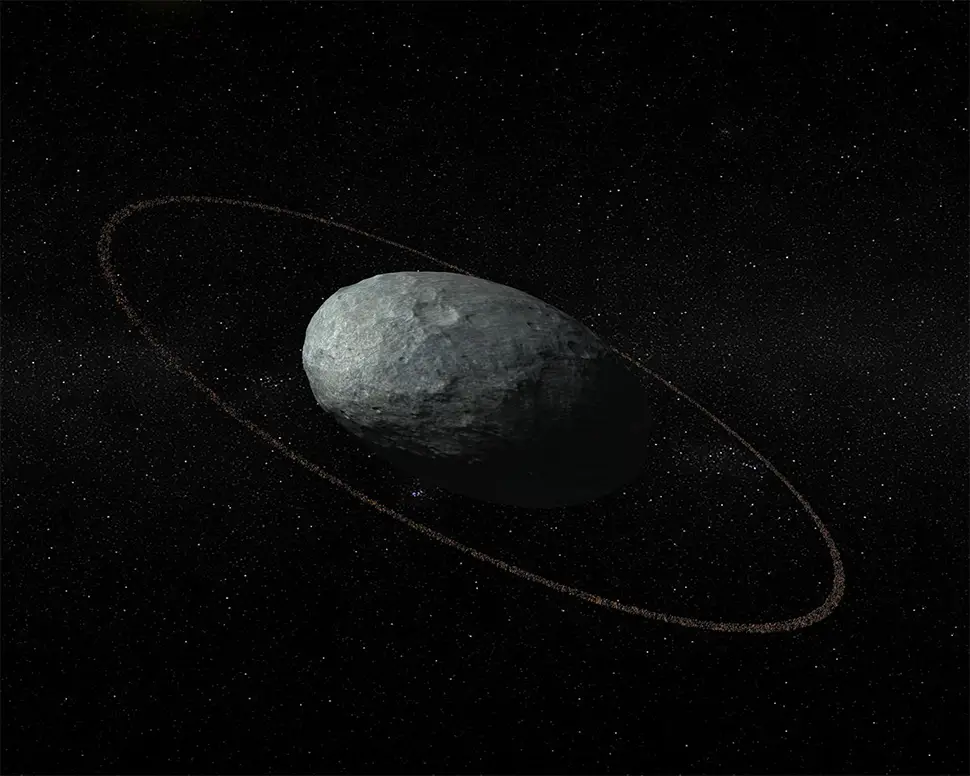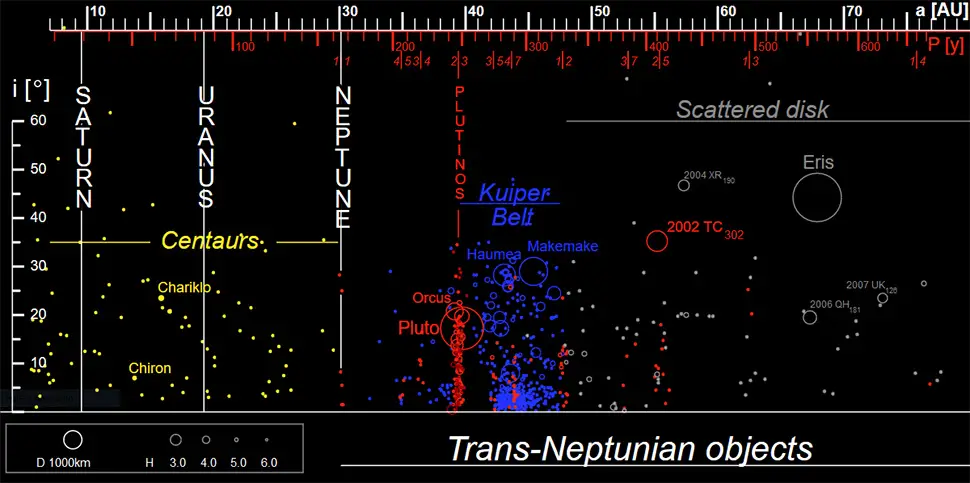
16th October 2017 First trans-Neptunian object with a ring The dwarf planet Haumea is confirmed to have a ring, the first time such a feature has been discovered around a trans-Neptunian object.
On the outskirts of our Solar System, beyond the orbit of Neptune, lies a belt of objects composed of ice and rocks, among which four dwarf planets stand out: Pluto, Eris, Makemake and Haumea. The latter is the least well known of the four and was recently the object of an international observation campaign that established its main physical characteristics. The study, led by astronomers from the Institute of Astrophysics of Andalusia and published in the journal Nature, reveals the presence of a ring around the planet. Trans-Neptunian objects are difficult to study because of their small size, their low brightness, and the enormous distances that separate us from them. A very efficient but complex method lies in the study of stellar occultations, or the passing of these objects in front of a star (like a small eclipse). It allows astronomers to determine the main physical characteristics of an object (size, shape, and density) and has been successfully applied to dwarf planets Pluto, Eris and Makemake.
"We predicted that Haumea would pass in front of a star on 21st January 2017, and 12 telescopes from ten different European observatories converged on the phenomenon," says José Luis Ortiz, researcher at the Institute of Astrophysics of Andalusia (IAA-CSIC) in charge of the study. "This deployment of technical means allowed us to reconstruct – with a very high precision – the shape and size of dwarf planet Haumea, and discover to our surprise that it is considerably bigger and less reflecting than was previously believed. It is also much less dense than previously thought, which answered questions that had been pending about the object." Haumea is an interesting body: it rotates around the Sun in an elliptical orbit, which takes 284 years to complete (it presently lies 50 times further from the Sun than the Earth) and takes 3.9 hours to rotate around its axis, far less than any other body of 100 km or greater size in the entire Solar System. This high rotational speed causes it to flatten out, giving it an ellipsoid shape, similar to a rugby ball. The newly published data reveals that Haumea measures 2,320 km in its largest axis – almost the same as Pluto – but lacks the global atmosphere that Pluto has. "One of the most interesting and unexpected findings was the discovery of a ring around Haumea," says Pablo Santos-Sanz, another member of the IAA-CSIC team. "Until a few years ago, we only knew of the existence of rings around the giant planets. Then, recently, our team discovered that two small bodies between Jupiter and Neptune, belonging to a group called centaurs, have dense rings around them, which came as a big surprise. Now we have discovered that bodies even farther away than the centaurs – bigger and with very different general characteristics – can also have rings." According to the data obtained from the stellar occultation, the ring lies on the equatorial plane of the dwarf planet, just like its biggest satellite, Hi'iaka, and it displays a 3:1 resonance with respect to the rotation of Haumea, which means that the frozen particles which compose the ring rotate three times slower around the planet than it rotates around its own axis. "There are different possible explanations for the formation of the ring," says Ortiz. "It may have originated in a collision with another object, or in the dispersal of surface material, due to the planet's high rotational speed. It is the first time a ring has been discovered around a trans-Neptunian object, and shows that the presence of rings could be far more common than was previously thought, in our Solar System as well as other planetary systems."
---
Comments »
|








